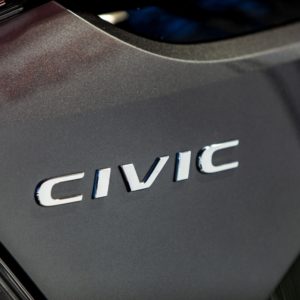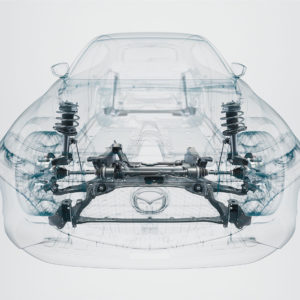From sedans and coupes to SUVs and full-size pickups一the US auto market has seen it all.
Engineering and innovative tech has brought dozens of car types to life, with each one catering to a specific consumer class.
In the US, it’s safe to say that pickup trucks are the cream of the crop. There’s something about these four-by-fours that makes Americans want to embark on the greatest road trip possible.
Still, there are a lot of drivers who would simply prefer hopping on a classic sedan or a smaller ride. Sedans, coupes, and mid-size crossovers have seen their fair share of the spotlight in the market, except for one一the hatchback.
Here’s Why Hatchbacks Aren’t Popular In the US
Cost, practicality, configuration, and demographics are factors that limit the hatchback’s popularity in the US.
Cost
Hatchbacks are generally more popular in Europe than in America, which also means that a lot of hatchback models come with a right-hand drive configuration.
So, if a manufacturer wants to sell hatchbacks to the US, it’ll need to create a whole new lineup with a left-hand drive setup to conform to the country’s driving standards.
Easy right? Not quite.
Aside from redesigning the vehicles for the US market, hatchback manufacturers will also have to ensure that the vehicles are aligned with the US Federal Motor Vehicle Safety Standards (FMVSS).
The FMVSS is an entirely different set of regulations from the United Nations Economic Commission for Europe (UNECE), and the US (along with Canada) isn’t a signatory to the ECE standards.
So, if European manufacturers want to sell their hatchbacks in the US, they’ll have to come up with three versions of each model: the European version, a left-hand drive version, and another one that passes the FMVSS.
It’s ridiculously expensive to produce three versions of the same model, which is why not a lot of hatchbacks are sold in the US.
There’s also some gatekeeping at play here. With the expenses of selling a hatchback in the US at an all-time high, competitors are less likely to enter the US market.
Practicality
For drivers who often bring a lot of things during their trip, cargo space is extremely important. Unfortunately, this feature isn’t one of the hatchback’s strongest suits.
Driving a hatchback means you’re more likely to gain cargo height but lose cargo depth, which is the exact opposite of what happens when you’re driving a sedan.
Also, many drivers still prefer driving a sedan because it has more passenger space than a hatchback.
Configuration
For some drivers, they consider sedans to be masters of privacy. The trunk offers a secure space for storing valuables whenever they leave the car, and there’s no way of taking a peek at those items.
Hatchbacks, on the other hand, tend to have an exposed rear because the back windshield directly exposes the cargo space.
Unless you have heavily tinted windows (which could be illegal in some states), anyone can sneak a peek at your cabin.
Demographics
Demographics play a crucial role in dictating what a market needs, especially when talking about cars.
The US is known to have wider roads and long stretches than those in Europe, so large vehicles have no problem passing through most of the routes. The long roads also call for ride comfort above anything else, and it’s a feat that most small cars can’t offer.
Competitive Market
Cars like hatchbacks and sedans tend to have small displacement engines, making them one of the most fuel-efficient cars on the market. Big vehicles like trucks and SUVs, on the other hand, have a reputation for using too much fuel to power their engines.
Over the years, however, automakers have come up with a way for large vehicles to become more fuel-efficient than before. This meant that SUVs and trucks can compete with smaller vehicles while offering more space and ride comfort.
What’s So Great About Hatchbacks?

The dwindling popularity of hatchbacks in the US might be apparent, but that doesn’t take away the perks of driving one. You’ll still see a couple of hatchbacks on the road, mainly because of these benefits.
Cost
Hatchbacks are easily some of the most affordable vehicles out there, making them a great choice for young people looking to buy their first car. Maintaining a hatchback is also considered cheap due to its simplicity and small engine.
Flexibility
While it’s true that hatchbacks can’t offer the same cargo space as sedans and other larger vehicles, they do their best to adapt.
Most hatchbacks have foldable rear seats, which can create more space at the back if you’re lugging around items that are too big for the rear compartment.
The size of the average hatchback also adds to the vehicle’s maneuverability. With a hatchback, you can easily slide through traffic and handle tricky roads with ease.
Lastly, parking won’t be as tricky when you’re driving a hatchback, as it can easily fit into tight parking spaces unlike full-size sedans and larger vehicles.
Spacious Rear Headroom
Compared to sedans, hatchbacks have a slightly elevated roofline, making it easier to carry bulky items and seat rear passengers more comfortably without straining their necks.
Hatchbacks also have an upright seating position, so passengers are able to get in and out of the vehicle with ease.
Better Visibility
In the case of hatchbacks, the absence of a trunk can be seen as both an advantage and disadvantage.
No trunk means less privacy when storing items, but the general layout of hatchbacks having more windows allows for more visibility when navigating the road. The vertical seating of the rear seats in hatchbacks can also add to the rear view mirror’s effectiveness.
Affordable Insurance Premiums
Insurance is a must for every vehicle, and owning a car like a hatchback entails lower insurance premiums compared to other vehicle types.
Where to Get High-Quality Parts for Your Hatchback
A hatchback requires proper maintenance, like any vehicle type. If you notice some parts are starting to show signs of wear, you should replace them immediately to prolong the car’s lifespan. Thankfully, CarParts.com has an array of high-quality auto parts for your hatchback.
Our website is optimized to be user-friendly, so you can use your mobile devices to browse our auto parts catalog. We also have a built-in vehicle selector that lets you filter the components based on year, make, and model.
We also have distribution centers with the latest technology to optimize the order and delivery process. This means you can expect your order to arrive in as fast as two business days!
Shop now, and get the best deals for your hatchback!
Any information provided on this Website is for informational purposes only and is not intended to replace consultation with a professional mechanic. The accuracy and timeliness of the information may change from the time of publication.



















